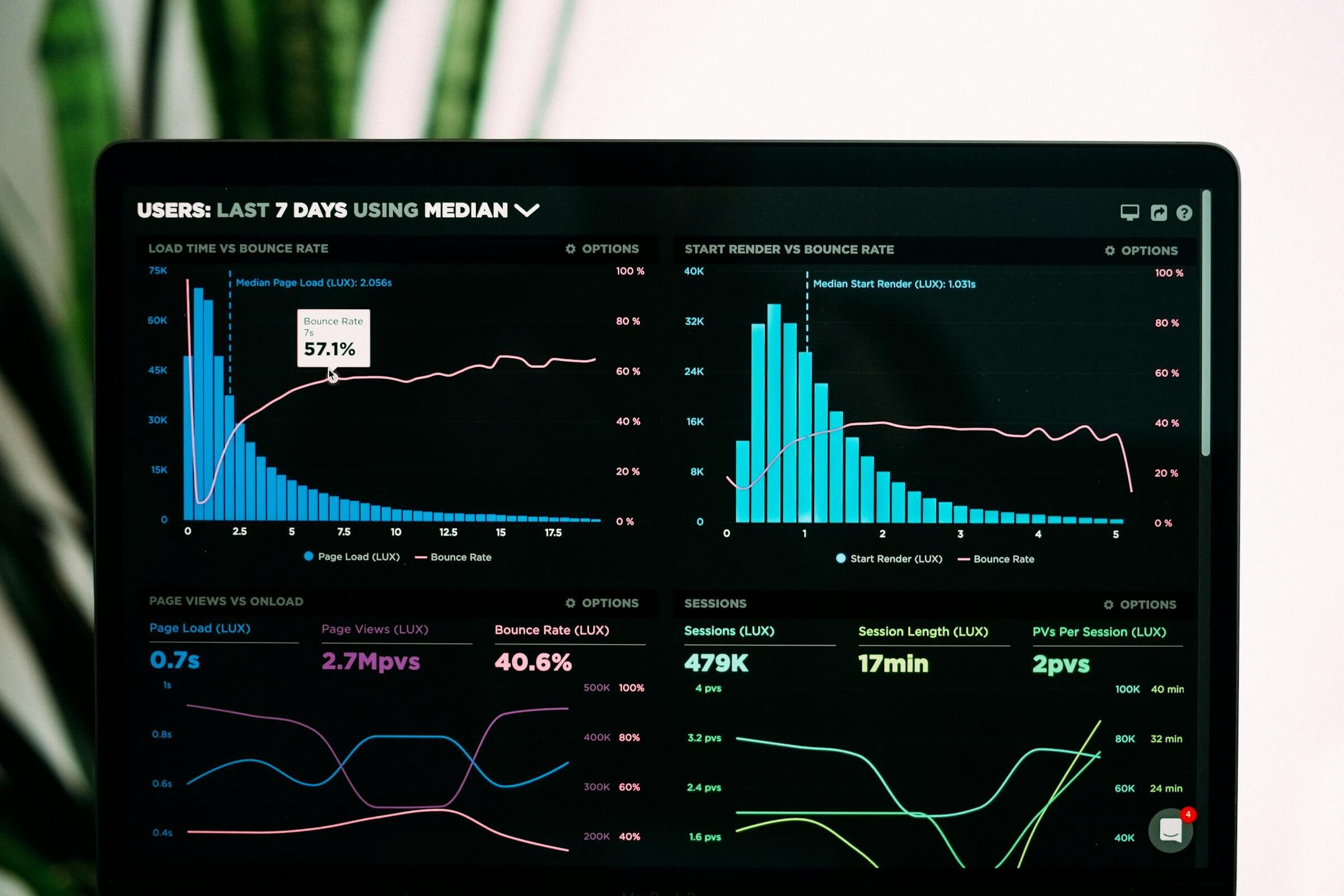Ecommerce Conversion Optimisation: Effective Tips & Tricks
With the rise of online shopping, ensuring high ecommerce conversion rates is vital. Explore effective tips and tricks for ecommerce conversion optimisation.

Despite the significant rise in online shopping, a crucial challenge endures: low ecommerce conversion rates can seriously impede revenue. It's an issue that requires keen attention and strategic action.
The solution to maximizing ecommerce conversion rates lies in implementing effective optimization strategies. By analyzing user behavior, conducting A/B testing, and optimizing website design and content, businesses can create a seamless and persuasive online shopping experience that encourages visitors to make a purchase. This comprehensive approach to ecommerce conversion optimization is essential for entrepreneurs seeking financial success in the competitive online marketplace.
As of early 2023, competition in ecommerce has become fiercer than ever, necessitating a comprehensive and data-driven approach to maximize conversion rates and outpace the competition.
What is ecommerce conversion optimization?
Ecommerce conversion optimization is the process of improving the performance of an online store to increase the percentage of visitors who make a purchase.
For entrepreneurs seeking financial success, ecommerce conversion optimization is the strategic approach to enhance their online store's performance and boost the number of visitors who convert into paying customers.
- Analyze user behavior
- Conduct A/B testing
- Optimize website design and content
- Create a seamless and persuasive shopping experience
- Essential for entrepreneurs seeking financial success
Understanding Conversion Metrics
Conversion metrics serve as the compass in the vast sea of ecommerce optimization, directing your strategies towards profitable shores. It's crucial to grasp key indicators such as Conversion Rate, which reflects the percentage of visitors completing a desired action, and Average Order Value (AOV), measuring the average spending per transaction. Equally vital are Customer Lifetime Value (CLV), estimating the total revenue a business can expect from a single customer, and Cart Abandonment Rate, highlighting lost sales opportunities. Diligent analysis of these metrics provides the necessary clarity and focus required for crafting high-impact optimization initiatives.
Identifying Key Performance Indicators
Key Performance Indicators (KPIs) are the beacon for ecommerce strategy—instrumental in steering conversion rate optimization efforts effectively.
It is essential to pinpoint exact KPIs that resonate with your specific ecommerce goals; whether that's enhancing user experience, increasing sales, or improving customer loyalty, each necessitates distinct metrics for accurate assessment.
Understanding these metrics empowers retailers to deploy precise interventions—tailored to stimulate growth and address performance gaps—thus bolstering the likelihood of achieving ecommerce excellence.
Elevated conversion rates correlate directly with strategic KPI tracking, serving as a barometer for digital commerce success.
Benchmarking Against Industry Standards
Delve into comparative analysis with fervor.
Industry standards act as a critical gauge of performance, encompassing various benchmarks that reveal the strength and efficiency of your ecommerce enterprise. Accurate interpretation of these benchmarks necessitates refinement in analytic capabilities—a demanding yet indispensable undertaking. As such, benchmarks serve as a compass; they guide strategic decision-making and prioritize improvements. They illuminate the path to superior customer engagements and conversions.
One must discern the significance of industry comparison.
Securing a comprehensive understanding of where you stand among peers is imperative—the echo of one's place in the competitive landscape. Utilize industry standards not as a ceiling but as a launchpad for surpassing expectations—a catalyst for relentless pursuit of excellence. Relentless pursuit of excellence is paramount, attained through methodical benchmarking and continuous enhancement.
Leverage these insights for strategic alignment and innovation.
In conclusion, precision in benchmarking against industry standards transcends the mere act of comparison; it signifies a rigorous commitment to continuous improvement within the ecommerce domain. Recognizing that the benchmark of today could become the baseline of tomorrow, ambitious entities must perpetually evolve. Mastery of these benchmarks facilitates crafting strategies that resonate with consumer trends, ensuring sustained relevance and, ultimately, commercial triumph.
Streamlining the Checkout Process
Efficiency in the checkout flow is a linchpin for fostering consumer trust, reducing cart abandonment, and bolstering conversion rates.
Mindful of the fact that every additional field or step in the checkout can translate into lost sales, commit to a design that is both intuitive and expedient. This pertains not only to the elimination of superfluous fields but also to the integration of seamless payment options and transparent cost disclosures.
Preference for a "guest checkout" option often correlates with higher conversion rates; insist on offering this alongside a simplified account creation for those who might reward you with loyalty.
Simplifying Forms and Fields
Effective form optimization is crucial to reducing friction and enhancing user experience within ecommerce platforms.
- Minimize the Number of Fields: Curtail the amount of information requested to that which is absolutely necessary.
- Group Related Information: Organize fields into logical sections to streamline the process and reduce perceived complexity.
- Use Autofill Where Appropriate: Implement autofill technology to expedite the form-filling process for returning customers.
- Provide Inline Validation: Use real-time validation to guide users and prevent submission errors.
- Clearly Distinguish Optional From Required: Differentiate optional fields from required ones to prevent user confusion.Avoiding form fatigue is key to keeping potential customers engaged.
By paring down to essentials and clarifying user requirements, businesses can diminish the barrier to completion, thereby increasing the likelihood of conversion.
Incorporating Multiple Payment Options
The breadth of payment options available to customers can significantly impact ecommerce conversion rates. Offering only a single payment method may alienate potential customers who prefer alternative options. To amplify the efficacy of your checkout process and increase conversion rates, it is crucial to diversify your payment offerings. This includes traditional methods such as credit and debit cards, as well as modern alternatives like digital wallets, bank transfers, and even cryptocurrency. By providing compatibility with various payment forms, you signal to customers that your store values their convenience and security, fostering a more inclusive shopping environment.
Furthermore, it is essential to consider the global reach of your ecommerce platform. Payment preferences can vary tremendously across different regions and countries. Failing to respect these preferences may dissuade international customers from completing a purchase. To address this, integrating region-specific payment solutions demonstrates cultural awareness and a commitment to accommodating the financial habits of your diverse customer base.
Consequently, a meticulously curated suite of payment options can act as a robust conversion catalyst. Regularly reviewing the trends in payment methods, especially as new technologies emerge and consumer behaviors shift, ensures that your ecommerce store remains competitive and attractive to a broad audience. This strategic choice not only enhances the user journey but can also directly lead to a higher conversion rate, solidifying your position in the marketplace.
Enhancing User Experience
The interface of an e-commerce platform is a visual handshake, the first impression setting the stage for customer interaction. Intuitive navigation structures support a seamless experience, funneling potential buyers towards conversion with minimal friction or confusion. This requires a balance between aesthetic appeal and functional design, prioritizing user-friendly elements that cater to diverse user preferences.
To truly enhance user experience, one must consider the adaptability of the interface across different devices. A "mobile-first" approach acknowledges the preeminence of smartphones in the digital consumer's life, necessitating responsive design and rapid load times. Personalization forms another tier of optimization—recommending products based on user behavior not only demonstrates attentiveness but fosters a sense of connection that can increase the likelihood of conversion.
Website Speed Optimization
In the digital marketplace, website speed is a non-negotiable asset—it directly influences bounce rates and conversions.
- Condense file sizes: Utilize image and video compression to decrease load times.
- Leverage browser caching: Store commonly used files on users' devices to reduce server requests.
- Optimize code: Minify CSS, JavaScript, and HTML to improve performance.
- Employ Content Delivery Networks (CDNs): Distribute content across multiple servers to speed up delivery.
- Prioritize above-the-fold content: Ensure immediate visibility for essential information.
Streamlined optimization ensures visitors engage with your site without delay.
Focusing on speed sustains consumer interest and can dramatically boost your e-commerce conversion rate.
Mobile Responsiveness and Adaptability
Mobile commerce is rapidly expanding, making responsiveness and adaptability essential for conversion optimization.
- Implement a fluid grid layout: This ensures your website dynamically adjusts to different screen sizes and orientations.
- Utilize responsive images: Employ techniques to serve appropriately sized images based on the user's device.
- Optimize touch controls: Design for touch interactions with appropriately sized buttons and actionable spaces.
- Minimize input requirements: Streamline forms and checkout processes to reduce the typing needed on mobile devices.
- Conduct mobile-specific A/B testing: Continually test and refine the mobile experience to cater to user preferences.Prioritizing the mobile user experience is a necessity, not a luxury.
By adapting to mobile demands, you create a seamless path for mobile users to convert, enhancing overall performance.
Leveraging Social Proof
Social proof is a pivotal driver for e-commerce conversion, capitalizing on human psychology to influence decisions. Deploy customer reviews, ratings, and testimonials prominently to instill confidence and legitimize your offerings. By presenting real user experiences, potential customers are more willing to trust and engage with your brand.
Credibility amplification is critical in an online ecosystem. Including trust badges, "As seen in" media logos, and user-generated content can significantly boost a consumer's perception of trustworthiness. Moreover, showcasing the quantity of items sold or number of customers served also taps into the bandwagon effect, nudging new visitors towards a purchase.
Displaying Customer Testimonials
Leveraging testimonials can substantially affirm your brand's trustworthiness and quality. Highlighting customer satisfaction emboldens potential buyers to take decisive action.
Incorporating rich, authentic testimonials with an emphasis on story-telling can dramatically sway purchasing behavior. These powerful endorsements serve as compelling evidence of your product's value, directly influencing conversion rates.
Establish a curated selection of testimonials that resonate with your target demographic, ensuring relatability and impact. Showcase a diverse array of experiences to address varied customer needs and preferences, further cementing credibility.
Employ strategic placement of testimonials to foster maximum visibility and engagement. Integrate them within high-conversion pages or at pivotal decision-making junctures in the customer journey.
Optimize for authenticity and relevance, regularly updating testimonials to reflect current customer experiences. This dynamic approach keeps your social proof fresh and persuasive.
Utilizing Ratings and Reviews
Leverage the power of consumer opinions through the strategic use of ratings and reviews in your ecommerce strategy.
Since ratings and reviews serve as social proof, integrating them prominently can significantly influence the buyer's journey. Online shoppers often seek validation from their peers before making a purchase, looking for confirmation that their potential investment is sound.
Harnessing this influential factor, businesses should encourage customers to leave feedback after a transaction. These genuine user experiences can lead to increased trust and credibility for your brand, directly affecting the likelihood of conversion.
Furthermore, addressing negative reviews with professionalism and a problem-solving attitude can foster customer loyalty and trust. It demonstrates to potential customers that your brand values consumer satisfaction and is committed to continuous improvement.
To capitalize fully on this tactic, ensure that your ratings and reviews are easily accessible and visible to prospective buyers. This transparency showcases your brand’s commitment to customer feedback and service excellence.
We want you to focus on your Business, not your Tech
More time to work on what matters to you
Before
A lot of time spent on managing your Design & Dev Teams to bring your product to the next level. Always trying to figure out what the cutting edge technologies could elevate your business to the next level.
After
All you have to do is join the Stakeholder meetings, define the next steps and goals, that support the Business goals. We take care of analysing the tasks, dissect them into packages and then build them in a timely manner



Utilizing Funnels and Analytics for Ecommerce Conversion Optimization
Funnels and analytics play a crucial role in understanding and optimizing the conversion process for your ecommerce store. By implementing strategic tracking and analysis, you can gain valuable insights into user behavior and identify areas for improvement. Here are some key steps to effectively utilize funnels and analytics for ecommerce conversion optimization:
Setting Up Conversion Funnels
Conversion funnels are visual representations of the steps that users go through to complete a desired action, such as making a purchase. By tracking users' progression through these steps, you can identify bottlenecks and areas of drop-off in the conversion process. Here's how to set up conversion funnels:
- Identify Key Conversion Actions: Determine the specific actions that lead to a successful conversion, such as adding a product to the cart, initiating the checkout process, and completing a purchase.
- Choose an Analytics Platform: Select a reliable analytics platform, such as Google Analytics, that allows you to set up and track conversion funnels.
- Set Up Goal Tracking: Define goals within your analytics platform to track each step of the conversion process. This will enable you to monitor the completion rates and identify areas for improvement.
- Analyze Funnel Reports: Regularly review the funnel reports in your analytics platform to identify drop-off points and potential areas of improvement. Optimize the user experience and reduce friction at each step to increase the likelihood of conversion.
Analyzing User Behavior with Analytics
Analytics provide valuable insights into user behavior, allowing you to make data-driven decisions to improve your ecommerce conversion rates. Here are some key steps to analyze user behavior using analytics:
- Track Key Metrics: Utilize your analytics platform to track important metrics, such as bounce rate, average time on page, and exit rate. These metrics can provide valuable insights into user engagement and identify areas for improvement.
- Segment Your Audience: Divide your audience into different segments based on demographics, behavior, or other relevant factors. This segmentation allows you to gain a deeper understanding of user preferences and tailor your optimization strategies accordingly.
- Utilize Behavior Flow Analysis: Analyze the behavior flow report in your analytics platform to visualize how users navigate through your website. This analysis can help you identify popular pages, common paths, and potential areas of improvement.
- Implement A/B Testing: Use A/B testing to compare different variations of your website elements, such as headlines, buttons, or call-to-action placements. Analyze the performance of each variation to determine which ones drive higher conversion rates.
- Monitor Conversion Attribution: Track the sources and channels that drive conversions to understand which marketing efforts are most effective. This knowledge allows you to allocate resources to the most successful channels and optimize your marketing strategies.By utilizing funnels and analytics effectively, you can gain valuable insights into user behavior, identify areas for improvement, and optimize your ecommerce conversion rates for greater success in the competitive online marketplace.
The Most Important Analytics Metrics for Ecommerce Conversion Optimization
Analyzing the right metrics is crucial for optimizing your ecommerce conversion rates. By tracking and monitoring key analytics metrics, you can gain valuable insights into user behavior and make data-driven decisions to improve your online store's performance. Here are some of the most important analytics metrics to focus on:
- Conversion Rate: Conversion rate is the percentage of website visitors who complete a desired action, such as making a purchase. Tracking and improving your conversion rate is essential for increasing revenue and maximizing your ecommerce success.
- Average Order Value (AOV): Average order value measures the average amount spent by customers in a single transaction. Increasing the average order value can lead to higher revenue and improved profitability.
- Cart Abandonment Rate: Cart abandonment rate refers to the percentage of users who add items to their cart but leave the website without completing the purchase. Understanding and reducing cart abandonment is crucial for optimizing your conversion funnel and increasing revenue.
- Customer Lifetime Value (CLV): Customer lifetime value estimates the total revenue a business can expect from a single customer over their entire relationship with the company. By focusing on increasing customer lifetime value, you can improve customer retention and drive long-term success.
- Bounce Rate: Bounce rate indicates the percentage of users who leave your website after viewing only one page. A high bounce rate can suggest that visitors are not finding what they are looking for, highlighting the need for improvements in website design and content.
- Average Time on Page: Average time on page measures the average amount of time users spend on a particular page. This metric can indicate user engagement and help identify pages that may require optimization to increase user interaction and conversion rates.
- Exit Rate: Exit rate refers to the percentage of users who leave your website from a specific page. By analyzing exit rates, you can pinpoint pages where users are most likely to abandon the conversion process and implement improvements to reduce exit rates.
- Traffic Sources: Understanding where your website traffic is coming from is crucial for optimizing your marketing efforts. By tracking and analyzing traffic sources, such as organic search, paid advertising, social media, and referrals, you can focus your resources on channels that drive the most conversions.
- Mobile Performance Metrics: With the increasing importance of mobile commerce, tracking mobile performance metrics is essential. Metrics like mobile conversion rate, mobile bounce rate, and average time on page for mobile users provide insights into the user experience on mobile devices and help identify areas for improvement.
- Click-Through Rate (CTR): Click-through rate measures the percentage of users who click on a specific link or call-to-action. By optimizing your CTR, you can drive more qualified traffic to your product pages, ultimately increasing conversion rates.By regularly monitoring and analyzing these important metrics, you can identify areas for improvement and make informed decisions to optimize your ecommerce conversion rates for greater success.
Additional Ecommerce Conversion Optimization Tips
Implement Live Chat Support
Integrating live chat support on your website provides real-time assistance to potential customers, addressing their concerns and helping them make informed purchase decisions. This personal touch can significantly increase conversion rates by fostering trust and building strong customer relationships. Live chat support allows businesses to engage with visitors, answer their questions promptly, and provide tailored recommendations, creating a personalized and positive shopping experience. Additionally, it offers an opportunity to upsell or cross-sell products, further boosting sales. By leveraging the power of live chat support, entrepreneurs can enhance customer satisfaction, reduce cart abandonment, and ultimately drive financial success in their ecommerce ventures.
Offer Free Shipping and Returns
Shipping costs and return policies can be major deterrents for online shoppers. High shipping fees or complicated return processes can discourage potential customers from completing a purchase. By offering free shipping and hassle-free returns, you remove barriers to purchase and increase customer satisfaction. This gesture demonstrates your commitment to customer service and enhances the overall online shopping experience. Additionally, consider implementing transparent shipping tracking and providing estimated delivery dates to keep customers informed and manage their expectations. By prioritizing customer convenience and peace of mind, you can build trust, encourage repeat purchases, and ultimately drive financial success in your ecommerce business.
Use High-Quality Product Images and Videos
High-quality product visuals are essential for capturing the attention and interest of potential customers. Investing in professional product photography and videos allows you to showcase your offerings in the best possible light, highlighting their unique features and benefits. Clear, detailed visuals help customers make informed decisions and reduce the chances of cart abandonment. Additionally, consider incorporating interactive elements such as 360-degree product views or zoom-in features to provide a more immersive and engaging shopping experience. By prioritizing visually appealing and informative product visuals, you can effectively communicate the value of your products, build trust with customers, and increase conversion rates in your ecommerce business.
Optimize Product Descriptions
Compelling product descriptions are instrumental in persuading customers to make a purchase. Use persuasive language, highlight key features and benefits, and address potential concerns or objections. By providing detailed and enticing product descriptions, you can enhance the desirability of your offerings and increase conversion rates. Consider incorporating storytelling techniques to create an emotional connection with your audience and showcase how your product can solve their problems or fulfill their needs. Additionally, utilize social proof by including customer reviews and testimonials to build trust and credibility. By crafting compelling product descriptions that resonate with your target audience, you can effectively communicate the value of your products and drive financial success in your ecommerce business.
Implement Social Media Integration
Integrating social media platforms into your ecommerce website allows customers to share their experiences and purchases with their networks, amplifying your brand's reach and visibility. This serves as powerful social proof, as positive recommendations from friends and family can significantly influence purchasing decisions. Additionally, social media integration provides opportunities for engagement, customer feedback, and building a loyal community. By actively participating in social media conversations, responding to customer inquiries, and leveraging user-generated content, you can foster a sense of belonging and loyalty among your customers, ultimately driving repeat purchases and word-of-mouth marketing. Embracing social media integration as part of your ecommerce strategy can enhance brand awareness, customer engagement, and ultimately contribute to your financial success.
Personalize the Shopping Experience
Tailoring the shopping experience to individual customers by utilizing personalization techniques can significantly impact conversion rates. By analyzing browsing and purchase history, you can recommend related products that align with their interests and preferences, increasing the likelihood of cross-selling and upselling. Offering personalized promotions or discounts based on customer behavior and preferences further enhances the sense of exclusivity and encourages conversion. Additionally, implementing personalized email campaigns that deliver relevant content and product recommendations can nurture customer relationships and drive repeat purchases. By leveraging personalization, you can create a more engaging and customized shopping experience that resonates with customers, ultimately leading to higher conversion rates and long-term customer loyalty.
Optimize for Mobile-First Experience
Given the increasing prevalence of mobile shopping, it is crucial to prioritize the optimization of your ecommerce website for mobile devices. Ensure your website is mobile-responsive, with easy navigation, fast load times, and seamless checkout processes specifically designed for smaller screens. A mobile-first approach will cater to the needs and preferences of mobile users, providing a user-friendly experience that improves conversion rates. Additionally, consider implementing mobile-specific features such as click-to-call buttons, mobile wallets, and social media integration to enhance convenience and streamline the mobile shopping journey. By prioritizing mobile optimization, you can capture the attention of on-the-go shoppers, maximize engagement, and drive financial success in the ever-growing mobile commerce landscape.
Leverage Urgency and Scarcity Tactics
Creating a sense of urgency and scarcity can be a powerful strategy to encourage customers to take immediate action. By utilizing tactics such as limited-time offers, countdown timers, and low stock notifications, you can instill a fear of missing out (FOMO) and drive conversions. However, it is crucial to ensure that these tactics are genuine and transparent. Avoid misleading customers by providing accurate information about stock availability and setting realistic timeframes for limited-time offers. By maintaining trust and authenticity, you can effectively leverage the power of urgency and scarcity to increase conversion rates and create a sense of excitement around your products or promotions.
Offer Incentives for Referrals and Reviews
Encouraging satisfied customers to refer your products or leave reviews can have a profound impact on your conversion rates and customer loyalty. By offering incentives such as discounts or rewards for referrals and reviews, you create a win-win situation. Not only do you increase social proof and credibility through positive reviews, but you also attract new customers who trust the opinions of their peers. These incentives not only incentivize customers to take action but also foster a sense of loyalty and engagement with your brand. By leveraging the power of referrals and reviews, you can create a virtuous cycle of customer advocacy, driving higher conversion rates and long-term success in your ecommerce business.
Continuously Analyze and Optimize
Ecommerce conversion optimization is not a one-time task but an ongoing process that requires continuous monitoring and improvement. Regularly analyze your website's performance, user behavior, and conversion metrics to identify areas of improvement. Test different strategies, such as optimizing landing pages, refining call-to-action buttons, or experimenting with pricing and promotions, to understand what resonates best with your target audience. By staying proactive and adaptive, you can fine-tune your optimization efforts and drive sustained growth and success in the competitive online marketplace. Remember, optimization is a journey, and staying committed to continuous improvement is key to maximizing your ecommerce conversion rates.




















